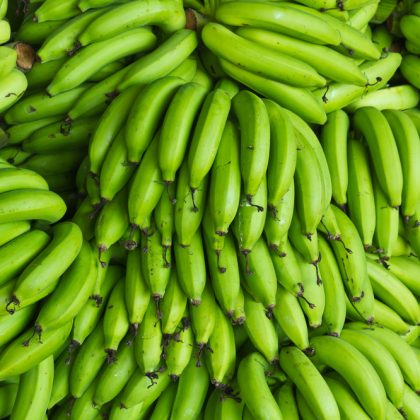Is Coca-Cola really a model of research transparency?
Public Health Nutrition Editorial Highlight: Coca-Cola – a model of transparency in research partnerships? A network analysis of Coca-Cola’s research funding (2008–2016) Authors: Paulo M Serôdio, Martin McKee and David Stuckler discuss their research below.
Can we trust research on nutrition paid for by Big Food? Some argue that, as the industry profits from sugar-sweetened beverages, known to increase risks of childhood obesity and diabetes, they can be expected to support research that creates confusion and doubt about those risks.(1) Others contend that researchers are independent and, as funders have no role in the study design, methods, interpretation or publication, the findings can be trusted.(2)
What both sides agree on is the need for transparency. Its importance became clear in August 2015, when the New York Times published documents, obtained using freedom of information laws, that Coca-Cola had provided $1.5 million in financial and logistical support to the “Global Energy Balance Network”, a non-profit organization led by influential academics at the Universities of Colorado, West Virginia and South Carolina, and whose main message was that there was no compelling evidence of a significant link between sugar-sweetened beverages and obesity.
In response, Coca-Cola company published its so-called “Transparency Lists” of a combined 218 researchers and health professionals whom they had funded since 2010.
In our recent paper, we constructed a new database of the scientific articles published since 2008 reporting funding from Coca-Cola. We did this by writing a computer program to extract and parse funding statements from articles, captured by Thomson Reuters’ Web of Science database. We have made the program, written for R-software, publicly available and we hope that others will use it to search systematically search for literature funded by those with vested interests in research, such as the agrochemical, alcohol, tobacco, and other industries (available for download at http://pauloserodio.com/swoc.R).
Using this new dataset, we investigated four important questions:
Question 1: Are Coca-Cola’s transparency lists complete?
We found discrepancies between the list of names that Coca-Cola’s disclose as people they fund and what can be found publicly in Web of Science. Overall, we identified 471 authors, involved in 128 Coca-Cola-funded journal articles (published between 2010 and 2015), who report Coca-Cola funding but do not appear in Coca-Cola’s transparency disclosures.
Question 2: How many studies and authors are funded by the Coca-Cola brand?
If we expand our search to the Coca-Cola brand, and include research published before 2008 and after 2015, we find that the company and its affiliated organizations have funded 461 studies between 2008 and 2016, involving 1,496 different authors (we assume not all were grant recipients). We provide a visualization of this research in the form of a co-authorship network (see Figure 3).
Question 3: Which research topics and interventions are supported by the company?
Using quantitative text analysis, we found that this research focused predominantly on topics such as “energy balance” and “physical activity” that divert attention from sugar and calorie consumption.
Question 4: Are Coca-Cola funded researchers declaring their links to the company in their publications?
We found that 17% (38) of researchers on Coca-Cola’s transparency list did not acknowledge funding from the company in their subsequent publications. Obviously, we could not tell whether this omission was intentional, but were it not for the company’s public acknowledgement, we would not know these researchers had collaborated with the company.
So can we trust Coca-Cola’s disclosures?
Our study suggests that Coca-Cola has taken a positive step in releasing details of research it funds, but it is clear that still a great deal of information is missing. Both the company and the researchers underreport their funding. This may be in an effort to minimize funding when it could be attached with a stigma in the eyes of public health researchers. Relying exclusively on funding statements may also give us an incomplete picture, as they often do not include the necessary information to identify the Principal Investigator(s) and the year in which the grant was awarded.
Nonetheless, approaches such as ours can help improve transparency in two ways. First, by aggregating research funded by Coca-Cola we can reveal the scale of the company’s involvement in research as well as providing a benchmark that can be used to evaluate the company’s transparency pledge; second, we leverage the company’s transparency disclosure to assess how good are researchers at revealing Coca-Cola’s financial support.
Our results underscore the need for transparency to avoid potential conflicts of interest in research funding.
1. Oreskes N, Conway EM (2011) Merchants of doubt: How a handful of scientists obscured the truth on issues from tobacco smoke to global warming: Bloomsbury Publishing USA.
2. Aveyard P, Yach D, Gilmore AB et al. (2016) Should we welcome food industry funding of public health research? BMJ 353, i2161.
The full article ‘Coca-Cola – a model of transparency in research partnerships? A network analysis of Coca-Cola’s research funding (2008–2016) published in Public Health Nutrition is available to download for free until 21st April 2018.
Related Editorial: Disclosures of Coca-Cola funding: transparent or opaque? by Marilyn Tseng, Joaquin Barnoya, Salome Kruger, Carl Lachat, Stefanie Vandevijvere and Eduardo Villamor published in Public Health Nutrition is available to download for free until 21st April 2018.






